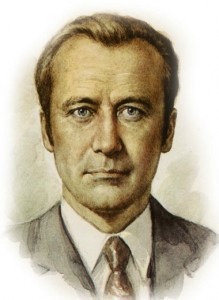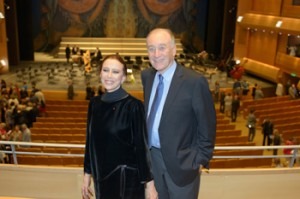
Schedrin
Listen to Bizet’s Habanera and then Shchedrin’s and image
Bizet: Carmen: Act I: Habanera: L’amour est un oiseau rebelle (Magdalena Kožená, Carmen; Berlin Deutsche Opera Chorus ; Berlin Deutsche Opera Children’s Choir ; Berlin Philharmonic Orchestra; Simon Rattle, cond.)

Shchedrin and Plietskaya on stage at the Mariinsky
Shchedrin: Carmen Suite: V. Carmen’s Entrance and Habanera (Russian National Orchestra; Mikhail Pletnev, cond.)
When we see it danced by Maya Plisetskaya, we can appreciate how the percussion adds the emphasis that she then increases with her gestures. When you’re used to a very full stage for this scene, with the cigarette girls, the soldiers, the children, etc. to see the empty stage with the “chorus” reduced to a set of heads at the back of the stage completely changes the emphasis of the piece and focuses it down on our two protagonists.
What’s even more interesting is to hear Shchedrin’s music for Carmen and the toreador and then see how much more intense it is when danced:
Shchedrin: Carmen Suite: X. Torero and Carmen (Russian National Orchestra; Mikhail Pletnev, cond.)
To see an opera recast as a ballet and then with such a change in the orchestration makes us think again about those over-full stages. An empty stage sometimes says so much more.
For the full ballet, see
The ending is particularly interesting: her meeting with Don Jose is not outside the bull ring, as it is typically staged in the opera, but inside it (starting around 37:11), preceded by a dance by Escamillo and a very small bull. The pattern of jealous plays out: Carmen dances with Escamillo , Carmen dances with Don Jose, Don Jose dances with the bull, Carmen chases the bull, and is caught by Don Jose’s knife. As Carmen dies, so does the bull. Olé!


